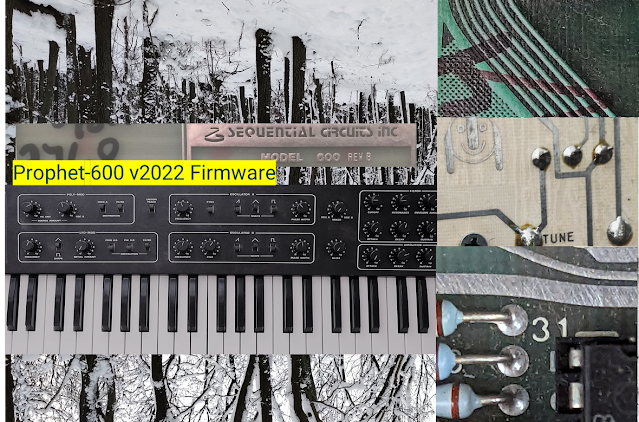Why should the Prophet 600 firmware upgrade be revisited?
It's all about hardware...
... and software.
Almost everything else inside the Prophet 600 is software controlled: reading all dials, buttons and the keyboard, display and UI logic, voice assignment, envelopes, LFO, tuning, MIDI in/out, etc. In the original version all this was done by the legendary Zilog Z80 micro-processor. I never owned one or tried it out, as I bought my Prophet 600 already equipped with the modified Teensy+ 2.0 processor and the GliGli firmware and the previous owner didn't have the Z80 anymore. However, I have heard and read that the Z80 was just underpowered for that task and that it was steppy and unresponsive. The only thing I can say is that with the GliGli upgrade the synth sounds amazing.
What is missing?
Being technically minded, I looked for background information on the project. It is an open source project, with all code available and reasonable documentation. I did, however find the following situation:
First, the only formal release of the Prophet 600 upgrade by GliGli is version 2.0. After that, significant further development took place in 2015 leading up to a release candidate for version 2.1. That version was feature complete but lacked adequate / updated documentation, so it was never properly released, although it is openly available and some more explorative musicians use it. Nevertheless, I found that many users are still using version 2.0, even though the non-released version 2.1 featured things many significant improvements and also a sequencer (even polyphonic) which the version 2.0 doesn't have. The one I bought had version 2.0 installed on it.
Second, there is an active fanbase discussing bugs and missing features. Among the drawbacks was still noticeable steppiness, unstable sequencer / arpeggiator speed and conflicts between internal and MIDI pitch bend. There were desired features such as a local off mode for MIDI integration and discussions about softer mod wheel action and modified arpeggiator patterns.
Short, there is not only a need to bring the development to a proper close in the form of well documented release. Things have evolved since. There is also the potential to close some gaps, to organize structured testing and to generally incorporate the feedback from over 5 years of community experience. On top of this, the overhaul of the project code base means that the work is secured for some more years and the newer compilers also offer better optimization.
I think a new Prophet 600 GliGli based release is feasible and useful. This is what this blog is about. I will send regular updates on the work here.

Comments
Post a Comment